Calathea rufibarba belongs to the genus Calathea, which includes about 200 species of plants, which are themselves in the large arrowroot family (Marantaceae). Calathea is native to South and Central America, which is why the plant needs heat and sun. Most varieties are characterized by large leaves with dark and light green stripes, although they may also have deep purple undersides (such as Calathea Roseoptica and Calathea Ornata). Even with Calathea rufibarba, the undersides of the long, narrow leaves are dark purple. How can you care for Calathea rufibarba and what does the plant need? Find out in the following article.
Calathea rufibarba is characterized by green leaves with red undersides and wavy edges.
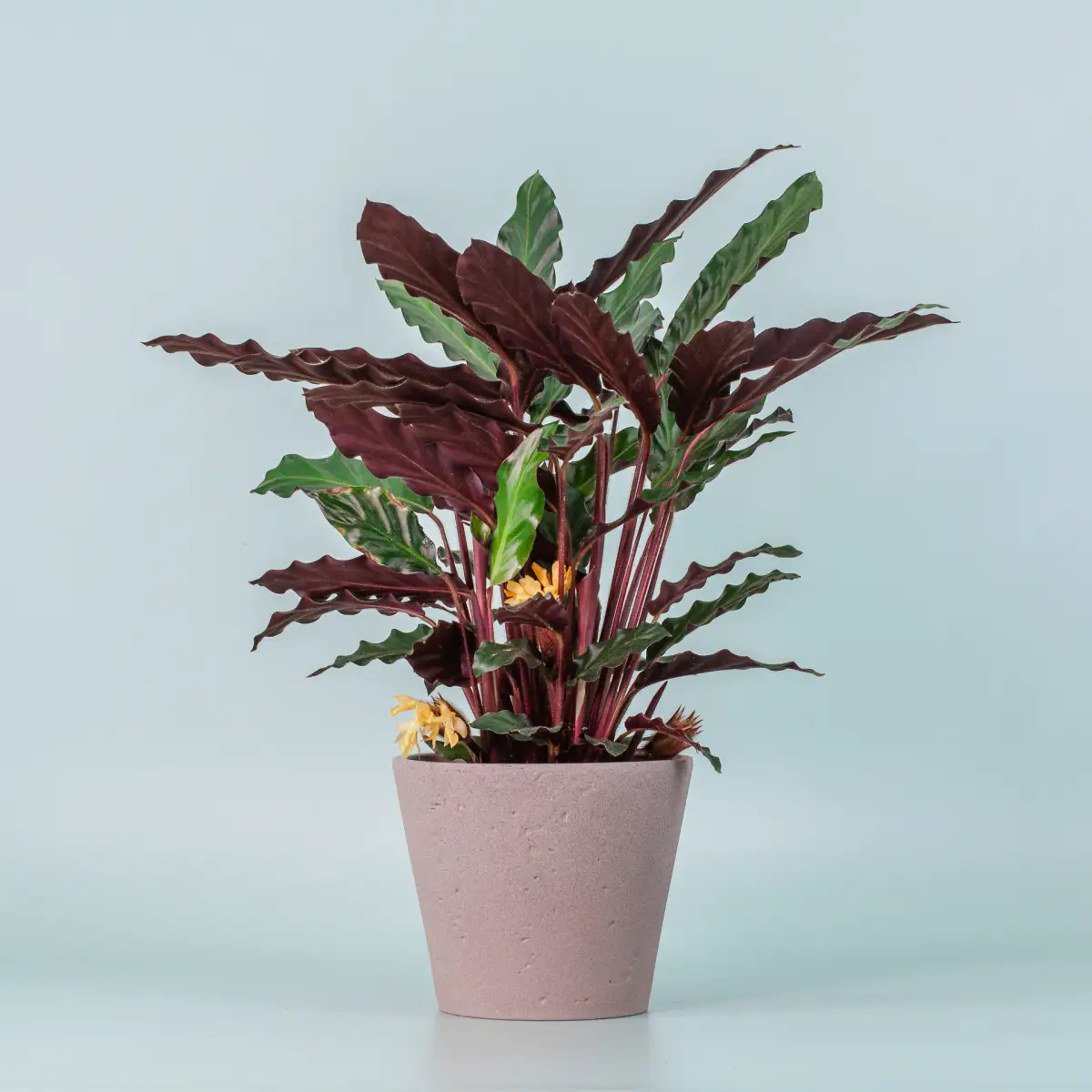
What location does Calathea need?
Calathea needs to keep his homeland in mind. Rufibara Coffee Sunlight. However, long-term direct sunlight is not recommended for plants. Calathea Rufibarba (also known as Spring Calathea) is popular both outdoors and as a houseplant. However, be careful that long-term continuous sunlight without shade can slow the plant’s growth and cause sunburn of the leaves. This calathea feels most comfortable at a temperature between 18 and 22 degrees and high humidity (around 60-70 percent and even higher). Some professional gardeners even recommend keeping a humidifier with the pot. In winter you should keep the plant away from radiators as they dry out the air.
This green plant prefers high temperature, sunny places and plenty of humidity.

During the rest period (between November and March), tropical calathea prefers low temperatures – from 15 to 20 degrees. The plant cannot tolerate frost and sub-zero temperatures. Calathea rufibarba is not hardy and therefore needs to overwinter indoors with just enough sunlight. Winter quarters or stairs are also suitable if the area is warm and the humidity is high enough.
How do you care for Calathea Rufibarba?
In principle, Calathea rufibarba is not a demanding plant. But there are a few things you should consider when caring for Calathea rufibarba. In addition to plenty of sunlight and high humidity, the plant needs a humus-rich, nutrient-rich substrate that is especially suited for houseplants. The soil should also be well drained and have a pH between 5 and 6. It is also very important to ensure good soil drainage to avoid possible root rot. Experts recommend covering the bottom of the pot with a layer of sand, expanded clay or sand-like material and placing the substrate on top.
Calathea rufibarba is poisonous and not good for a home with four-legged friends and children.
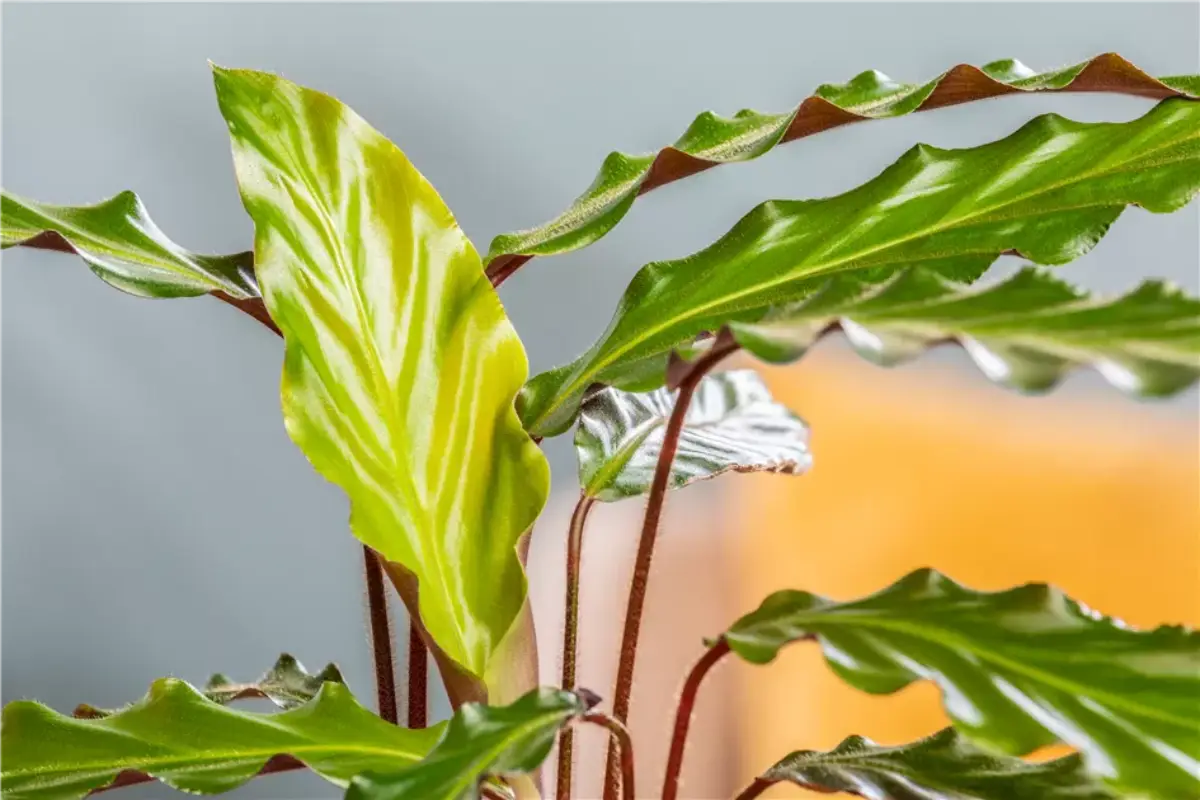
© Adobe Stock
If cared for properly, Calathea rufibarba grows up to 70 cm in height
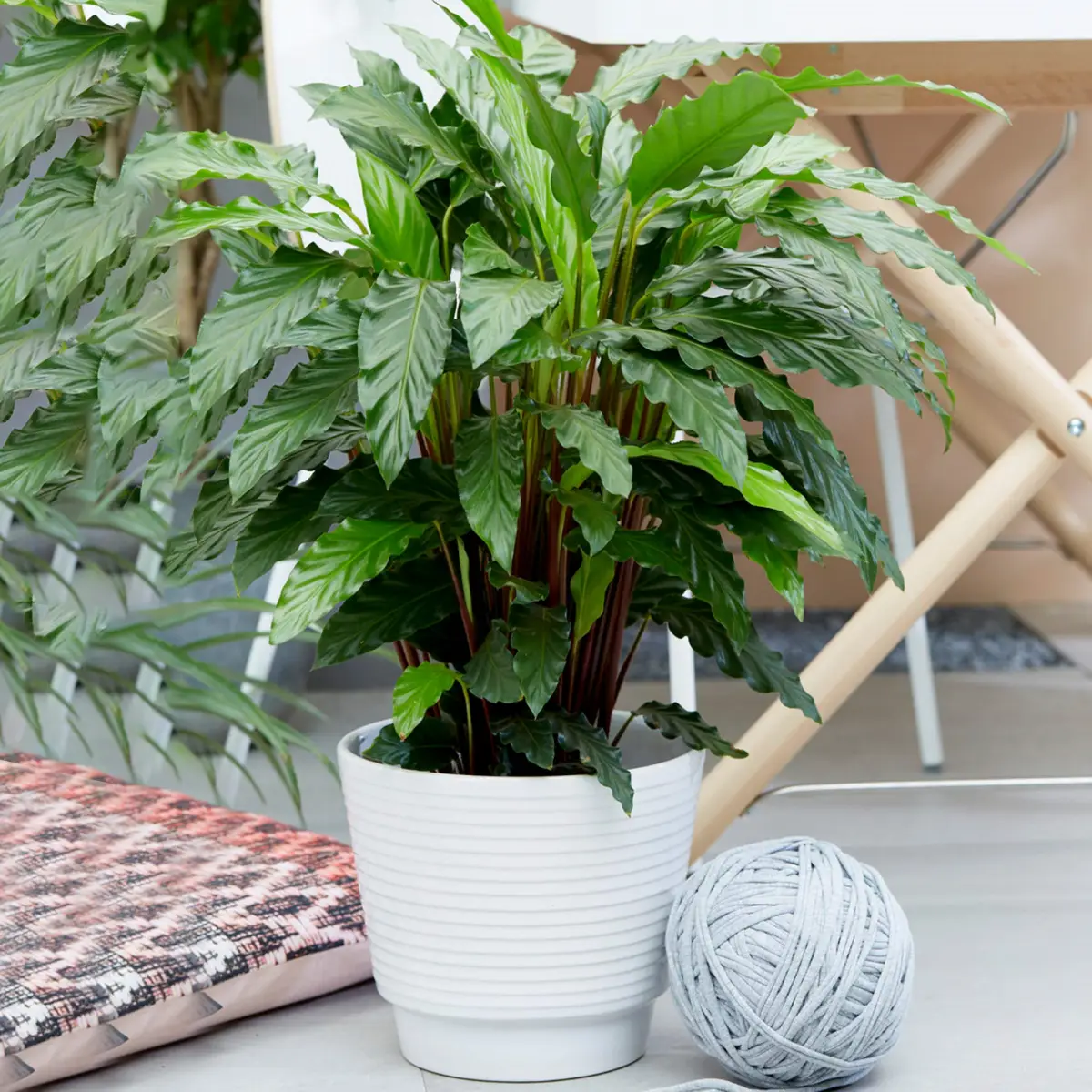
How Often Should You Water and Fertilize Calathea Rufibarba?
Calathea rufibarba needs moist and wet soil to grow healthy root balls. To do this, water the plants regularly, but not often. It is best to check the soil moisture with your finger before watering. 2-3 cm of soil should be dry. It is better to use rain water or water with less lime or lime free.
From time to time you can spray the plant with water to get the necessary moisture. In winter and during the dormant phase, Calathea needs less water. Only water the plant every 5 to 6 weeks.
Do not water the plant too often as the leaves will break.
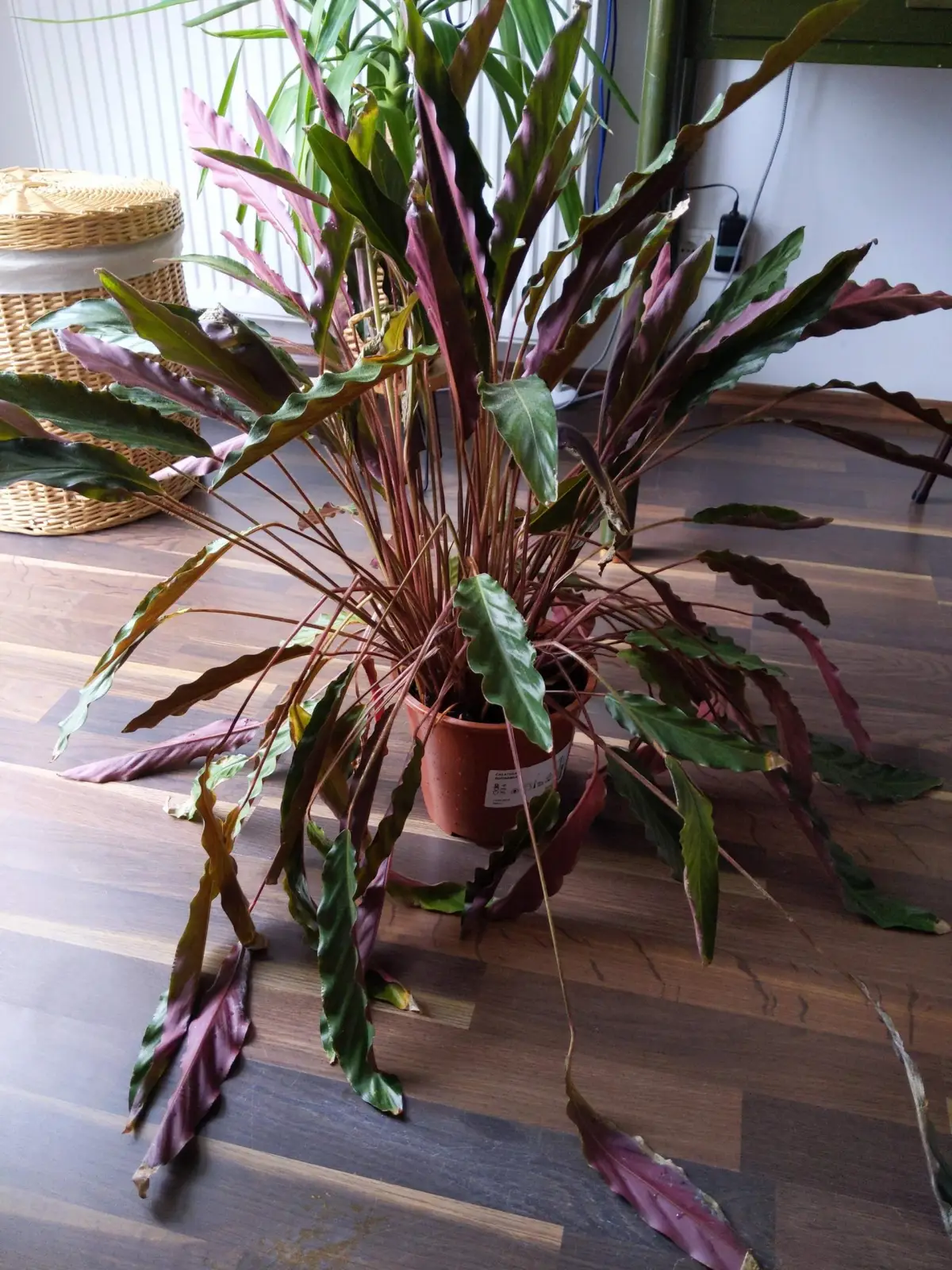
As for fertilization, use a liquid fertilizer for green plants that you can mix with water. Between April and October, fertilize the plant about every 15 days. You can still apply a small amount of liquid fertilizer every six weeks.
Why do my calathea have brown spots?
If your calathea develops brown tips, spots or yellow leaves, this is a clear sign of trouble.
- They put Plant often/rarely
- you use Calcareous water
- gave humidity The room is too small for the plant
- Sunlight May cause brown leaf spots
- gave temperature There is less in the room
You should transfer the plant to a larger pot every two years.

Calathea rufibarba is anything but hardy and needs a high room temperature. When it’s too cold, the leaves drop off. Then change the place and place the pot in a bright, warm and humid place. No direct sunlight The shadow And Draft You should avoid it at all costs!
You’ve checked all these points, changed the location, watered the plant regularly… still, the leaves are rotting or have yellow/brown edges? It can indicate pests or diseases.
Important! In principle, wilting of the older leaves (i.e. the lower ones) is normal. But if there are several bleaches at once, it usually indicates waterlogging or too much fertilization. In this case, you should repot the plant or replace the old substrate with a fresh one.
Dry yellow leaves can indicate pests in the soil.
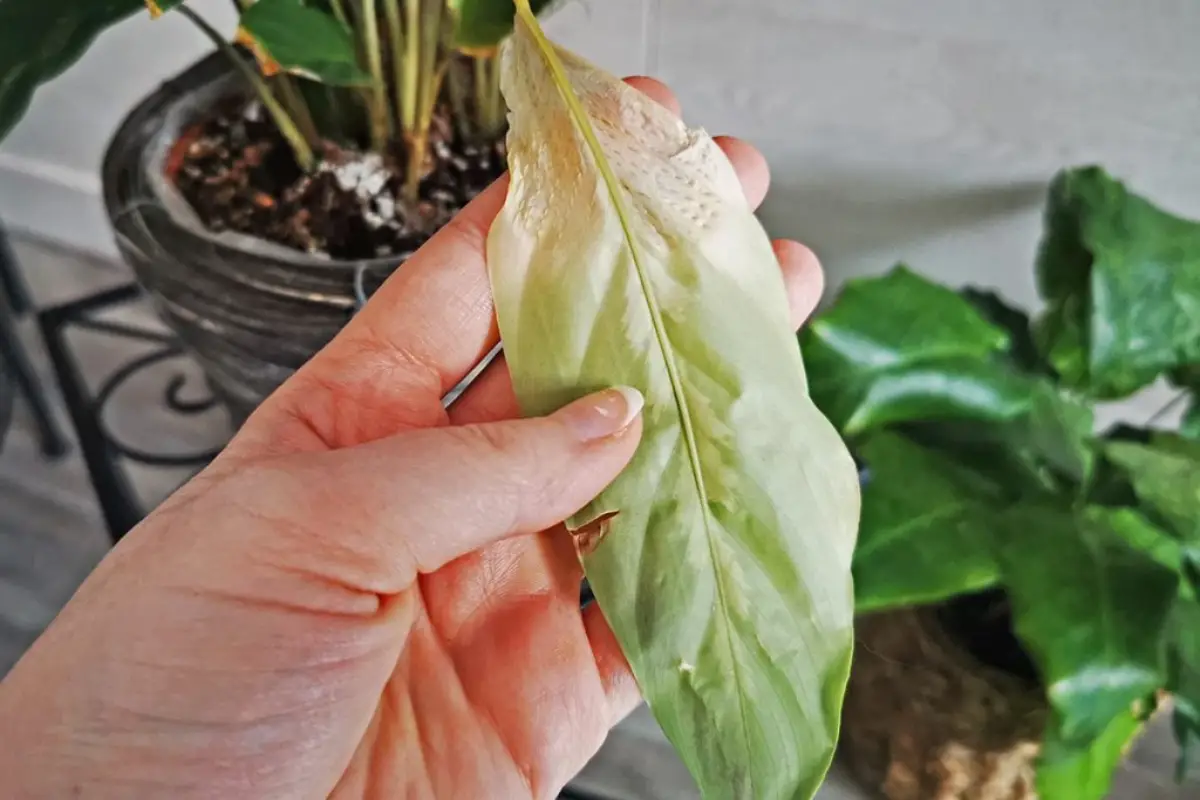
Calathea rufibarba Care: Diseases and Pests
Low humidity makes calathea more susceptible to disease. The plant then becomes more susceptible and is more frequently attacked by insects such as spider mites, aphids, mealybugs and thrips. So, check the soil and leaves (especially the undersides) for yellow larvae or white webs.
You will then need to give the entire plant a good shower and cut off any diseased leaves (those with spots, brown edges, or covered in a sticky coating). Then treat the plants thoroughly with a spray or other pest control product. If you see larvae or eggs in the soil, replant the entire plant immediately.


